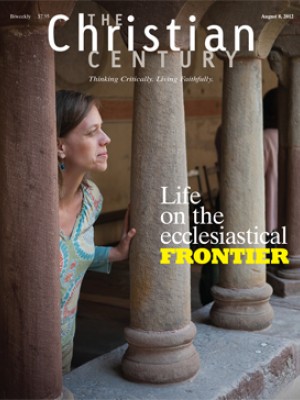
It is impossible not to think about life and death when there is a hospital bed in the living room. Perhaps this is one reason why hospice teams recommend that the patient’s bed be placed in a public area of the house—so that family and friends must accept the fact that their loved one is dying. It might not happen today or even tomorrow, but this life will end soon.
According to a 2009 report of the National Alliance for Caregiving in collaboration with AARP, 29 percent of the U.S. population—more than 65 million people each year—provide care for a disabled, aged or chronically ill friend or family member. That statistic suggests a lot of hospital beds in a lot of living rooms.
Read our latest issue or browse back issues.
A hospital bed has been set up in the house where I grew up—in the living room, which is located at the home’s geographical center. There is something rather poetic about that, although I’m sure the architects of the 1950s were thinking more about cost-cutting and space efficiency than they were about symbolic statements. Nevertheless, if you want to pick tomatoes from the garden, you must walk past the gleaming steel of that hospital bed to get through the back door. If it is time for a meal at the dining table, you are serenaded by the hums and sighs of an air compressor inflating the mattress to keep pressure sores at bay. If you prefer to sit and read a book, every time your eyes lift from the page they encounter the bed and the one who lies upon it. Whatever you do, you cannot escape the reality before you. Denial is not an option.
One thing we have discovered, however, is that with the deathbed constantly in view, dying gets taken up into living. Planning for a memorial service and a birthday celebration takes place in the same living room, with the patient drifting in and out of both conversations. The palliative care nurse checks the patient’s pulse while a plumber replaces the broken dishwasher in the next room. The stark directives of the Emergency Care Protocol and a grandchild’s brightly colored painting hang side by side on the door of the refrigerator. The days are no less physically and emotionally challenging, but a lot of life and laughter happen in that house: moments of grace as precious as bread from heaven. One can go a long time on the strength of that food.
Over time we have come to recognize that while dying is surely happening in the living room, a lot of living is taking place in the dying room. As we learn to see more clearly, the signs of life are all around us. Gifted caregivers, weekly visitors from the church, meals from the family next door, grandchildren who offer hugs, even pets that gallop and play, dashing across the room before curling up in the crook of an arm: each of these keeps the family’s attention on more than the grief that accompanies our days. Both death and life enter the household in new ways.
It is possible, of course, to close one’s eyes to all those signs of life, just as the crowd seemed to do in the Gospel of John. They were so focused on one aspect of the “obvious”—all that bread!—that they missed out on the full reality that is before them.
It had not been long (in narrative time) since they’d gathered around Jesus on the side of a mountain, hungry, with no place to buy food. Taking a few loaves of barley bread and a couple of fish, Jesus had catered a belly-busting feast for them with enough pieces left over to fill 12 baskets. This magnificent gift represented the abundance of God—and should have reminded them of the true bread, Jesus, who gives life to the world.
Then and now, however, people who have eaten their fill of bread sometimes find it difficult to recognize the things of God in an everyday experience like a meal, even when that meal begins with a poor kid’s lunch being transformed into a feast for thousands. As a friend sometimes reminds me, those who have all that they need too easily forget how to see the signs of God.
Those in the crowd gathered around Jesus seemed to have that difficulty, and it prevented them from recognizing the truth about their experience and the one who made it possible. They were blinded or distracted by the obvious. We already know him, they asserted; he is Joseph’s son, we have watched him grow up. How could he possibly be who he says he is, the one that came down from heaven? They focused on the wrong thing, and their misplaced attention blinded them to truths that were vastly more important. The bread that filled their bellies provided nourishment for a day or two, but it could not give life eternal. Only Jesus, the true bread that comes down from heaven, can do that.
Perhaps that’s why John’s Gospel expends so much ink on the bread discourse. Like a hospital bed in the living room, Jesus’ words repeatedly draw our attention to those things that truly matter and help us to see beyond the obvious. They call on us to remember the truth of that experience on the mountainside, the signs of life in the midst of death. All the talk about bread points to something more important than a miraculous feeding of 5,000 people, and the repetition that Jesus is the true bread from heaven draws us to the reality that is before us. Dying is not only about death, and bread is not only about a good meal.






